Feverish Dreams of Years Past: The 1980 Comics Annual
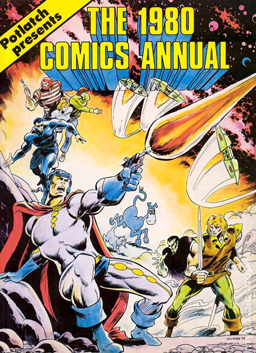 (I’ve decided to again delay my ongoing series of essays about C.S. Lewis, for a number of reasons. As it happens, though, there’s another piece I’ve been meaning to write for a while. So here it is.)
(I’ve decided to again delay my ongoing series of essays about C.S. Lewis, for a number of reasons. As it happens, though, there’s another piece I’ve been meaning to write for a while. So here it is.)
When I was very young I used to have a copy of an early example of a North American comics trade paperback: Potlatch Publication’s The 1980 Comics Annual. It’s an anthology of work from then-new Canadian comics creators. I remember being fascinated by the weird mix of stories in it, humour and science fiction and horror and fantasy and action. I lost that copy (as children do lose things), and for years afterward the stories lived in my mind as feverish dreams, images of panels I could not contextualise. At some point I found a copy in a back-issue bin and was able to read the thing again. Thanks to the internet, I’ve learned a bit about the background of the book and some of its contributors. But it’s still strange to me, a mixed bag of rough talent and accomplished stories. I’m going to describe the book and what I’ve found out about it, and I’d love to find out more from anyone else who can chip in.
Potlatch Publications was and is a small Canadian company under the editorship of Robert F. Nielsen. From 1975 to 1985 Potlatch put out a yearly series of books, the Canadian Children’s Annuals, based on English Boy’s Own and Girl’s Own books. I remember some of the CCA volumes; the cover of the 1980 volume in particular is burned into my mind. The Annuals mixed short articles, fiction, and comics. And in 1980, an editor named Ian Carr put together an annual for Potlatch entirely filled with comics, 128 pages, 64 of which were in colour. Some of the contributors came from the CCA books, and some (I think) from elsewhere.
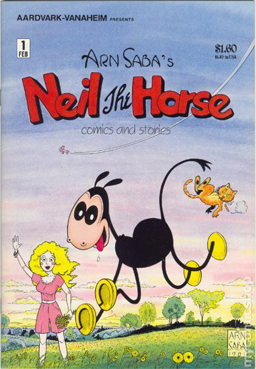 It was intended to be the first of an ongoing series of comics annuals, but for whatever reason other volumes never followed. That’s a shame. The 1980 Annual is uneven, but has some fine work. The Canadian Children’s Annuals, in my memory, had a feel of well-meaning adults writing down to children — but the Comics Annual is filled with action and adventure. There’s no obscenity or sexuality, but lots of gunplay, some horror, and occasionally some real wit. It catches a bit of the feel of then-contemporary Marvel books, aimed at kids but readable by older people.
It was intended to be the first of an ongoing series of comics annuals, but for whatever reason other volumes never followed. That’s a shame. The 1980 Annual is uneven, but has some fine work. The Canadian Children’s Annuals, in my memory, had a feel of well-meaning adults writing down to children — but the Comics Annual is filled with action and adventure. There’s no obscenity or sexuality, but lots of gunplay, some horror, and occasionally some real wit. It catches a bit of the feel of then-contemporary Marvel books, aimed at kids but readable by older people.
There are 31 pieces in the Annual, some of them just a page or two long. The book opens with “Return of the Magician,” a full-colour fantasy story written and laid out by Katherine Collins, then working under the name Arn Saba, with script assistance from Lois Atkinson and “graphics” (finished art and colour, maybe?) credited to Don Inman. It’s the eight-page story of a magician whose power is fading, as he returns to his childhood home. It’s well-written, and although some of the figure work seems stiff, the colours are sumptuous. Genuinely touching, the story evokes a sense of how time passes for a single ageing man, and also a sense of how things don’t change in a work-filled rural life. It’s a strong contrast, used well.
I can’t find any information about Atkinson or Inman, but Collins had an interesting career. In 1975, working under her birth name of Arn Saba, she’d created a troupe of comic-strip characters centred around the figure of Neil the Horse. Neil, who has two brief adventures in the Comics Annual, inhabits a world that looks and operates like something out of classic Fleischer Studios cartoons. According to Wikipedia, Dave Sim and Deni Loubert, then publishers of Aardvark-Vanaheim, saw the Neil stories in the Comics Annual and offered to publish a Neil the Horse series — which ended up lasting 15 issues.
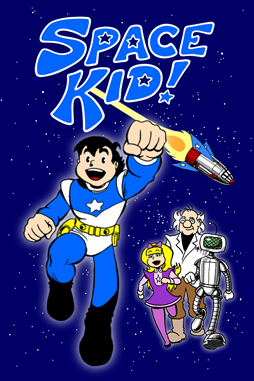 After “Return of the Magician” comes a three-page comedy strip, John Macleod’s “Blarg the Swordsman.” It’s a well-drawn black-and-white cartoon strip, mixing realistic and gag characters a little like Larry Elmore’s “Snarfquest” strip in Dragon Magazine would years later. Macleod went on to self-publish a black-and-white series called The Mundane Adventures of Dishman (later reprinted as a one-shot from Eclipse), and is currently working on a webcomic called Space Kid.
After “Return of the Magician” comes a three-page comedy strip, John Macleod’s “Blarg the Swordsman.” It’s a well-drawn black-and-white cartoon strip, mixing realistic and gag characters a little like Larry Elmore’s “Snarfquest” strip in Dragon Magazine would years later. Macleod went on to self-publish a black-and-white series called The Mundane Adventures of Dishman (later reprinted as a one-shot from Eclipse), and is currently working on a webcomic called Space Kid.
Next is a science fiction comedy short with no credits called “The Intergalactic Depletion Machine #21″; the plot doesn’t pay off, but the colours again have a richness to them maybe closer to Métal Hurlant than to most American comics of the time. After that is “Stareway…”, a nice wordless story with elegant black-and-white art from Paul Rivoche, who went on to an extensive career in animation and American comics. Of the next three stories, two are King Arthur parodies by Bill Slavin drawn in a style that looks to have been influenced by European BD. If this is the same Bill Slavin, he was only about 20 at the time, and has gone on to have a remarkable career in children’s book illustration. Between his two pieces is another wordless tale, Ken Steacy’s full-colour five-page “Street Noise,” about a street musician on an alien world. Steacy, now a member of the Canadian Comic Book Creator Hall of Fame, has worked extensively with companies including Marvel, DC, and Comico, for whom he adapted Jonny Quest. He also collaborated with Harlan Ellison on a graphic novel adapted from Ellison’s prose. He currently runs a publishing company focussing on high-quality reproduction of artists’ sketchbooks.
An uncredited two-page horror short, “The Believer,” follows; it’s well-drawn in a mainstream horror-comic style, but the plot’s too compressed to land. A three-page colour gag strip about Vikings landing in North America, “Haab the Luckless” by Steve LeBlanc, comes next. He’s another creator from this anthology who went on to have a career as an artist and illustrator in and out of the American industry, and he’s now working on webcomics of his own.
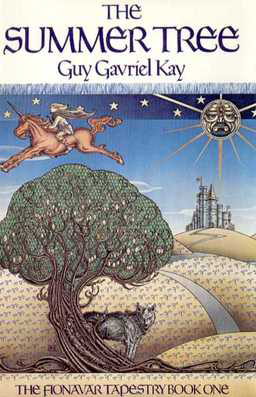 After a one-page humour strip about a Mountie in the north, credited only to “Jot,” comes a seven-page black-and-white science-fiction story by Bob Smith called “Last Chance!” It’s laid out in a very dynamic, dramatic storytelling style that feels a lot like 70s Marvel comics. The inking’s very heavy, and the dialogue threatens to overwhelm some of the pages, but it tells a solid time-travel story. Comicbookdb.com tells me this is the same Bob Smith who had an extensive inking career with DC and Archie; by time the Comics Annual came out, he would have already worked on titles like Shazam!, The Super Friends, and Plastic Man.
After a one-page humour strip about a Mountie in the north, credited only to “Jot,” comes a seven-page black-and-white science-fiction story by Bob Smith called “Last Chance!” It’s laid out in a very dynamic, dramatic storytelling style that feels a lot like 70s Marvel comics. The inking’s very heavy, and the dialogue threatens to overwhelm some of the pages, but it tells a solid time-travel story. Comicbookdb.com tells me this is the same Bob Smith who had an extensive inking career with DC and Archie; by time the Comics Annual came out, he would have already worked on titles like Shazam!, The Super Friends, and Plastic Man.
After a colour Neil the Horse story, a four page black-and-white Western by Richard Cordoba follows. I can’t find any information on Cordoba, but his story, “The Revenge of Yukon Tom!”, has some good layouts and strong visual storytelling. Then Ian Carr, the editor of the Annual, contributes a gentle two-page strip, “Malcolm and Eric.” It’s reminiscent of Walt Kelly’s work in the way characters frantically work to misunderstand each other, and in the warmth of its ink line. It’s an interesting contrast to the next piece, Martin Springett’s dark and violent science fiction story “The Hunter.” Springett is yet another contributor to this anthology who went on to have an interesting career, this time outside of comics as a musician and illustrator. Perhaps most notable for fantasy fans, he illustrated the original covers for Guy Gavriel Kay’s Fionavar Tapestry books.
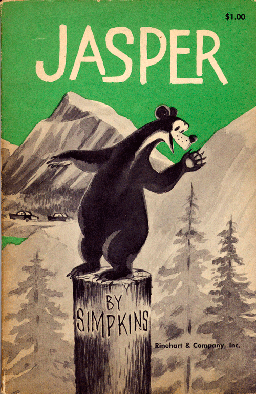 Three of the next five pieces are short science fiction parodies by Tom Nesbitt, who also contributes the two-page gag strip which closes the book. I seem to remember Nesbitt’s detailed caricatures from the Canadian Children’s Anuuals I had, but I can’t find anything about his work beyond the few credits at comicbookdb.com. Between two of his stories there’s a one-page prehistoric gag piece, “Cave-in,” that this helpful site says was done by James Simpkins; I don’t know if that’s the Jim Simpkins who was an animator and veteran cartoonist, and created the long-running Jasper the Bear feature for Maclean’s magazine. There is also the longest piece in the book, a 12-page science-fiction story written and drawn by Jim Craig with inking and lettering by Bill Payne. “Dust Bowl Sanction!” is an engaging action story that mixes elements from Western fiction and war fiction, specifically aerial-combat stories, into a science fiction tale. You’ve got rundown technology on a desert world, a heroic fighter, a grizzled prospector, and a leading lady with an improbably scanty costume. Also evil invaders from the sky. And art strongly reminiscent of classic adventure-strip cartoonist Frank Robbins; unlike most of the colour pieces in the Comics Annual, “Dust Bowl” features engagingly fluid linework. It brings out the energy and urgency of the story, about a complacent people who try to deny their past — until invaders out of ancient history launch a surprise attack.
Three of the next five pieces are short science fiction parodies by Tom Nesbitt, who also contributes the two-page gag strip which closes the book. I seem to remember Nesbitt’s detailed caricatures from the Canadian Children’s Anuuals I had, but I can’t find anything about his work beyond the few credits at comicbookdb.com. Between two of his stories there’s a one-page prehistoric gag piece, “Cave-in,” that this helpful site says was done by James Simpkins; I don’t know if that’s the Jim Simpkins who was an animator and veteran cartoonist, and created the long-running Jasper the Bear feature for Maclean’s magazine. There is also the longest piece in the book, a 12-page science-fiction story written and drawn by Jim Craig with inking and lettering by Bill Payne. “Dust Bowl Sanction!” is an engaging action story that mixes elements from Western fiction and war fiction, specifically aerial-combat stories, into a science fiction tale. You’ve got rundown technology on a desert world, a heroic fighter, a grizzled prospector, and a leading lady with an improbably scanty costume. Also evil invaders from the sky. And art strongly reminiscent of classic adventure-strip cartoonist Frank Robbins; unlike most of the colour pieces in the Comics Annual, “Dust Bowl” features engagingly fluid linework. It brings out the energy and urgency of the story, about a complacent people who try to deny their past — until invaders out of ancient history launch a surprise attack.
“The Gauntlet of the Gods” is next, an eight-page black-and-white pen and ink comic by John MacLeod, “with an assist from the unbroken hand of Steve LeBlanc.” It’s an effective pulpish fantasy story about a wizard, a thief, an object of infinite power, and a mysterious demon. The first hires the second to get the third from the fourth, thus launching the story. It’s not radically new, but is well-told.
A one-page story by Don Inman follows, retelling a First Nations myth about the origin of black flies. Then another one-page gag from James Simpkins. And then an 11-page colour story by Ian Carr, “Battleground,” revolving around a squad of four adventurers breaking up a bank robbery and hostage taking. The group, the Danger Squad, is a powerless Fantastic Four — an all-business action-movie leader, a blonde woman second-in-command, her kid brother, and a strong guy constantly trading insults with the kid. The art’s energetic in an old-fashioned Marvel style, though the story’s aimed at younger readers.
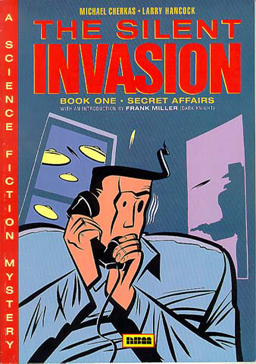 Next is a black-and-white hard-boiled PI tale, titled “A Dick Mallet Adventure,” by Michael Cherkas (I think I remember the character from the Canadian Children’s Annuals). It’s an energetic story with cartoony art and terse but distinctive dialogue. Basically comedic, it also tells a coherent story with all the right genre trappings. Cherkas was another contributor to the Comics Annual who went on to have a career in comics, perhaps most notably co-creating The Silent Invasion in the late 80s.
Next is a black-and-white hard-boiled PI tale, titled “A Dick Mallet Adventure,” by Michael Cherkas (I think I remember the character from the Canadian Children’s Annuals). It’s an energetic story with cartoony art and terse but distinctive dialogue. Basically comedic, it also tells a coherent story with all the right genre trappings. Cherkas was another contributor to the Comics Annual who went on to have a career in comics, perhaps most notably co-creating The Silent Invasion in the late 80s.
After a four-page Neil the Horse story comes “Spud,” a three-page colour science fiction parody by Paul McCusker, co-written by William King. It’s a simple story, probably too simple, but well-drawn. McCusker’s been a freelance illustrator and cartoonist for almost forty years, working for various newspapers and drawing the “Mighty Mites” strip for Owl, a Canadian children’s magazine. After his story comes “The Cat’s Night Out,” by Jeff and Carol Wakefield, starring their characters the Bubblegummers, who were leads for several years of a syndicated strip before becoming the mascots of a shoe company. Both Jeff and Carol Wakefield have gone on to careers as illustrators and (in Carol’s case) children’s book writers.
Finally, there’s “Little Feller,” a five-page story written by Ron van Leeuwen and drawn by Franc C. Reyes. It’s a simple story about a group of Western bandits who stumble on what they think is a leprechaun. The story’s simple, but the art’s quite nice, almost Severinesque, taking advantage of the black-and-white format to pull a couple of atmospheric tricks with shadows and silhouettes. I can’t find any more information about Leeuwen, but Reyes went on to do some work for DC Comics and some other publishers.
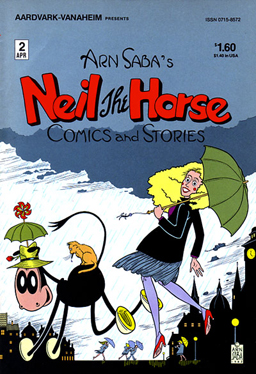 And that’s the 1980 Comics Annual. What’s it all add up to? An interesting book, I think, mainly produced by young and talented people. There’s a notable lack of women in the book. There isn’t much cultural diversity, either, and indeed there’s little that’s overtly or specifically Canadian in these stories — a story about Vikings landing in North America, a gag strip about a Mountie, maybe a retelling of a First Nations myth. A gag Frenchman in one of the Neil the Horse strips is the only reference to French. That’s about it for possible Canadian allusions. On the flip side, there’s also nothing in the stories to suggest they’re American (in terms of things like setting, for example).
And that’s the 1980 Comics Annual. What’s it all add up to? An interesting book, I think, mainly produced by young and talented people. There’s a notable lack of women in the book. There isn’t much cultural diversity, either, and indeed there’s little that’s overtly or specifically Canadian in these stories — a story about Vikings landing in North America, a gag strip about a Mountie, maybe a retelling of a First Nations myth. A gag Frenchman in one of the Neil the Horse strips is the only reference to French. That’s about it for possible Canadian allusions. On the flip side, there’s also nothing in the stories to suggest they’re American (in terms of things like setting, for example).
The book overall boasts a respectable level of craft for an independent comic in the late 1970s. The mix of genres it contains keeps things unpredictable, especially as none the stories are very long. The pace stays quick. And the production seems to me to about as good as any North American comic I’ve seen from around that time; tones and fine linework come out well, and colours are rich. It’s a nice-looking book.
And, as I can attest, it worked well with its primary audience — kids, perhaps especially boys, with an interest in comics and imaginative stories. Which, in the end, may be the most important point. It did what it set out to do. The book doesn’t seem to have left much of a mark on Canadian comics, other than inspiring the Neil the Horse series. It’s an interesting curiosity. As interesting curiosities go, it’s still a favourite of mine.
Matthew David Surridge is the author of “The Word of Azrael,” from Black Gate 14. You can buy a collection of his essays for Black Gate, looking at some fantasy novels of the twenty-first century, here. You can find him on Facebook, or follow his Twitter account, Fell_Gard.
I had the same experience – half remembered comics, stumbled across in a bargain bin 20 years later. And I always wondered what happened to Neil the Horse!